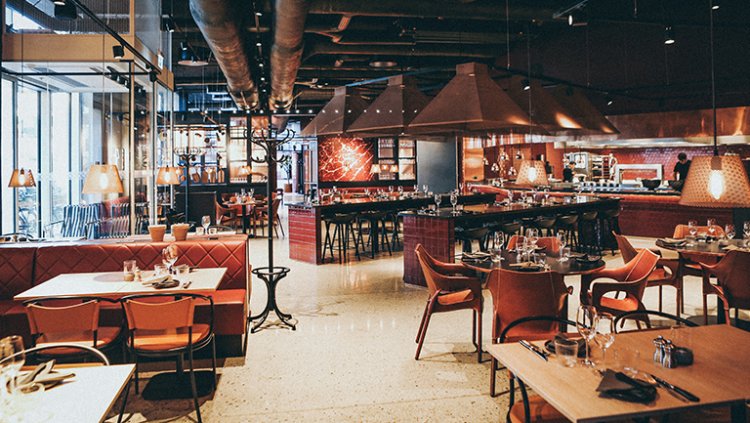Basic guideline for restaurant marketing
While restaurant marketing is a big topic, there are some general principles and mechanisms you can employ to focus your efforts on strategies that will yield results.

A huge chunk of this online population search for and find restaurants online. They look up menus, compare prices, go through reviews before going over to a restaurant or ordering food from there.
As per a 2016 Adweek survey, 25% of people have at least one restaurant app on their phone. As per another survey, 85% of those who search for food on their mobile phones go on to complete a purchase.
But they don’t stop at merely having discovered a restaurant that they might like, or after making a purchase.
Modern, tech-empowered consumers click pictures of the food that they have been served, go online to post their reviews, and share their experiences on social media—which in turn could enhance footfalls at your restaurants or dissuade people from further visiting your establishment.
So, here we outline some restaurant marketing ideas and strategies that will help you come up with a restaurant marketing plan that will lead to a higher chance of success.
The Marketing Plan
#1 – Get listed on restaurant discovery platforms
Restaurant search and discovery sites and review portals like Yelp and Zomato are widely used to search and find restaurants—including the fine dining ones.
In fact, over the years, they have become the go-to place for online users looking to find restaurants.
The idea is to appear before your target audience where they are looking for you. If your restaurant isn’t listed on one of these portals or apps, someone else’s will be. So, it’s definitely a good idea to list your restaurant on as many of these platforms as possible.
#2 – The SEO Essentials
SEO is definitely a marketing idea worth considering for your restaurant. The keyword ‘restaurants near me‘ has 7,480,000 monthly searches on Google. This fact alone should convince you to get your restaurant business listed on major search engines like Google and Bing.
There are 6 really simple things that you should do for the SEO of your restaurant website.
- Ensure the title of your homepage has your brand name + your location and zip code, e.g. “Smoke House Grill – Metairie, LA 70005”
- Get listed on Google My Business. In fact, it’s recommended to get listed on as many local directories, you could use a local citation service from Directory Maximizer to get this done.
- Ensure the address on your website matches exactly the information you submitted to Google and the aggregator sites. The address should be visible on your site. It could be in the footer. The presence of address information could help with local searches.
- Put up your menu items on a dedicated page. Don’t just include a PDF. While the chance of someone searching by your dish is rare, if the name of your dish is unique enough or is a signature dish, there is a chance it might show up if you have a dedicated menu page.
- It might be worth considering having dedicated pages for certain, if not all, food items on your menu. You could describe the item, its’ ingredients, typical customer experiences, etc. These pages could target the long-tail rare searches. It could also be interesting to read.
- If you know of any websites that serve your location and community, try to get a link from those sites. Any link from contextually relevant sites can go a long way in helping you rank for your local searches. You can even spot backlink opportunities from your competitors’ backlinks.
While there’s a lot more you could do from an SEO perspective, like having a blog and regularly publishing interesting content but those efforts may not justify the ROI of the effort put in. Hence, for most restaurants, just keeping the above 6 points in mind should be good enough.
#3 – Deal with, rather than avoid, customer reviews
When you have 92% of consumers reading online reviews, and more than half of the population in the age bracket 18-34 giving priority to online reviews over the opinions of friends and family, the importance of online reviews cannot be overstated.
Also, most times, people tend to air their bad experiences in a restaurant than their good ones.
#4 – Get a website to reflect your brand, your culture
While listing and review sites like Yelp, GrubHub, and Zomato make it easy for the customer to find restaurants online, they present you with a very few means to reflect and portray the personality of your restaurant brand.
In addition, there are charges and commissions involved for some of the services that these platforms provide, and the focus is not solely restricted to your brand. Plus, there’s the issue of the undeserved one-star ratings that begrudged customers sometimes hand you.
#5 – Rock it on Social Media
Not that I need to spell it out but social media presents an excellent opportunity for you to connect with your potential customers and get noticed. As observed in the infographic above, 61% of customers find restaurants from various social channels.
Social media marketing, over the years, has become an inalienable part of marketing exercises of restaurants—big and small.
If you have any other restaurant marketing ideas, tips or experiences to share, please do mention them in the comments below! Also, do make it a point to take a look at this exhaustive list of top restaurants keywords in case you’re planning an advertising campaign for your restaurant.
























